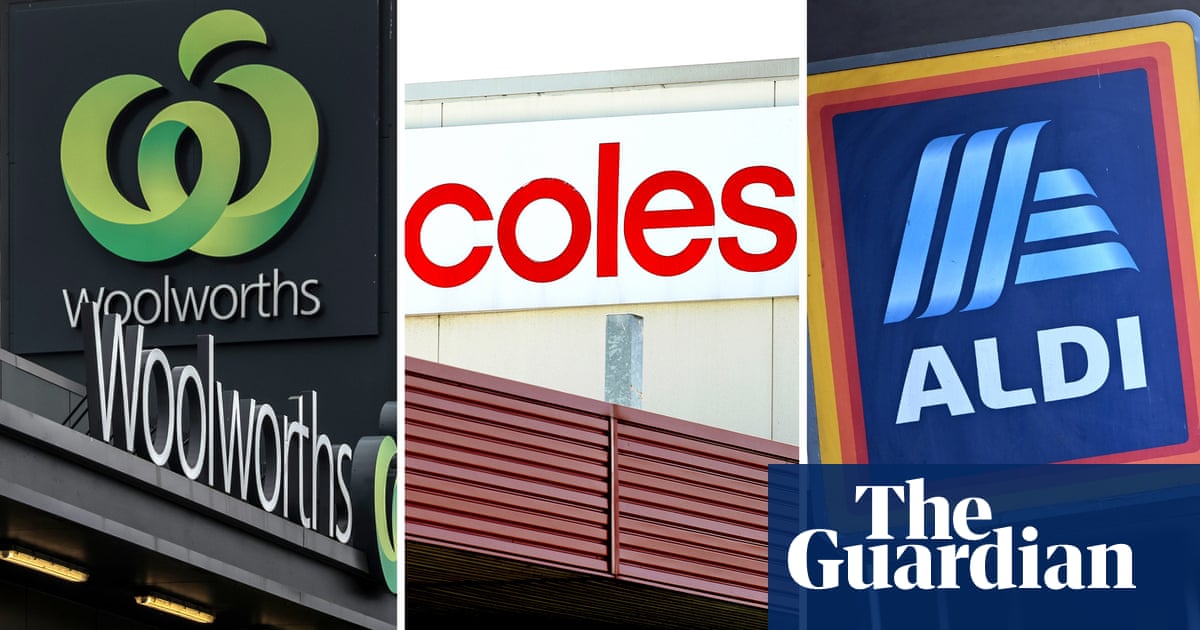A basket of Aldi groceries is typically 25% cheaper than an equivalent purchase at major chains Coles and Woolworths, according to government-funded research conducted by consumer group Choice.
The price comparison of 14 common grocery items is part of an initiative to provide better transparency of the supermarket sector, which has faced allegations of anti-competitive price gouging during a cost-of-living crisis.
Choice, which sent undercover shoppers to 81 regional and metropolitan supermarkets across the country, found that Aldi significantly undercut its bigger rivals, while prices at the duopoly were almost identical.
Aldi’s basket of groceries cost an average of $51.51, while Woolworths’ equivalent was $68.58. The comparable Coles basket was $69.33.
Choice’s chief executive, Ashley de Silva, said the findings were designed to give consumers access to transparent, clear and reliable information around pricing.
“Levels of trust in the supermarkets aren’t high,” de Silva said. “This kind of transparency is more important than ever as the cost of living crisis continues, and prices of basic grocery items climb.”
The 14 items are all common groceries such as apples, sliced bread, flour, tinned tomatoes, cheese and milk. Specials were not included.
Comparable items were chosen based on a range of factors including size, quality and ingredients.
Prices also differed according to location, with consumers in Tasmania and Northern Territory paying more for their groceries. They are also the only two states and territories where Aldi is not present, making them less competitive markets than the rest of the country.
“It definitely is a factor that there isn’t another major supermarket there and that doesn’t help people in those areas,” de Silva said.
On average, people outside Australian capital cities pay slightly less for groceries than those in the major cities.
Choice will publish comparison reports every quarter over the next three years to provide insight into price movements of popular items. The government has previously said the findings will provide shoppers with better information on the comparative costs of grocery goods at different retailers, highlighting those charging the most and the least.
The supermarket sector faced a Senate inquiry earlier this year, which recommended the government adopt measures to strengthen regulation, prevent price gouging, and increase penalties for anti-competitive behaviour.
Separately, the federal government has directed the competition watchdog to investigate grocery pricing practices and competition via a 12-month probe, which is under way.
The major supermarkets have repeatedly defended their business practices and blamed the rising cost of groceries on price increases imposed by major global food brands and general inflationary pressures.
Guardian Australia analysis has consistently shown that the big two supermarkets bolstered profit margins to beyond pre-pandemic levels during a period of fast-rising grocery prices for shoppers.
There are early signs profit margins will be pressured by ongoing public and political scrutiny in a trend noted by the financial analyst community.
Bree Hurst, associate professor at Queensland University of Technology, said she expected the public and political scrutiny to lead to lower grocery prices for consumers.
“However, my concern would be that behind the scenes, they are pushing the cost of these discounts on to their suppliers so that their margin remains the same,” Hurst said.
Fruit and vegetable growers recently told the Senate inquiry that some hadn’t received price increases from the major supermarkets in 15 years, while farmers were pressured to fund price promotions.

